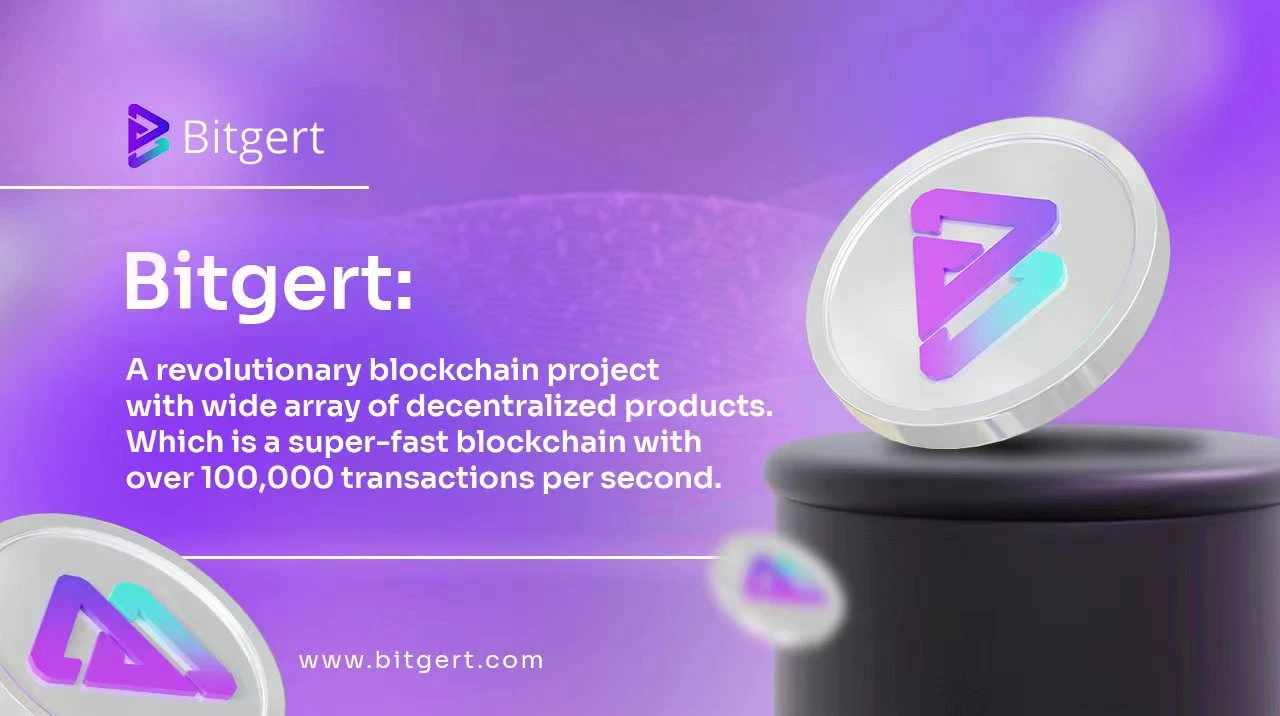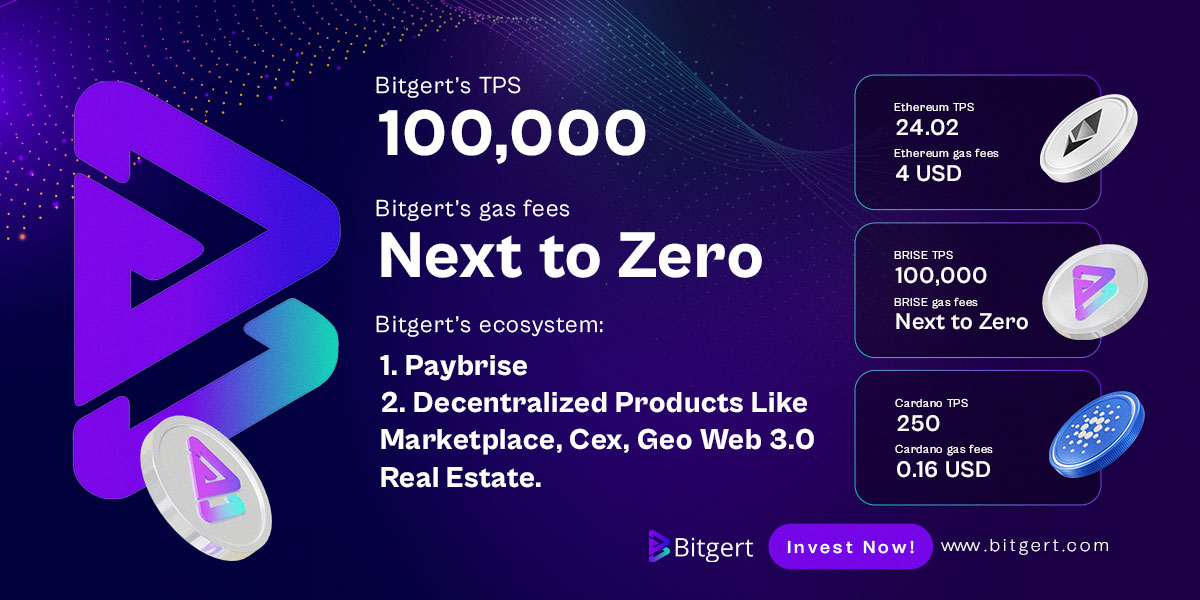As an important infrastructure in the blockchain industry, public chains are not only the foundation for the development and prosperity of various ecosystems, but also an essential entry point in the current Web 3 era. From Bitcoin to Ethereum, and later Polkadot, Cosmos, Dfinity, as well as the popular Layer 2 solutions... the competition in the field of public chains and scalability never stops. The logic behind this competition lies in the rapid development of the blockchain industry and the crypto market, which have raised higher requirements for public chains in terms of efficiency, cost, secure cross-chain capabilities, and ease of use. So, what kind of public chains will be needed in the blockchain ecosystem in the next decade to meet market demands? Perhaps I can pay attention to the solutions proposed by Bitgert Chain.

What is Bitgert Chain
In a nutshell, Bitgert Chain has created a new ecosystem that includes public chains, DEX, DeFi, wallet services, Staking services, and other mainstream formats of encrypted assets. With this complete set of products introduced by Bitgert, everyone can participate in cryptocurrency trading more conveniently and easily find their own Web 3 services.
Bitgert Chain was launched in July 2021 after two years of development and construction.
Next, let's take a quick look at the main products of the Bitgert ecosystem:
Bitgert Chain is a blockchain compatible with EVM, with a gas fee as low as 0.00000001 US dollars and a TPS of over 100,000;
BRISE: BRISE is the native token of the Bitgert Chain network. As an important medium to connect the Bitgert Chain ecosystem, it is not only endowed with diversified rights, such as the right for users to participate as validators to ensure the security of the blockchain and receive rewards. In addition, BRISE adopts a deflationary economic model, and 5% of the transaction fees generated by each BRISE transaction will be used for BRISE repurchase. Along withWith the continuous prosperity of the Bitgert Chain ecosystem, it can be anticipated that trading on BRISE will become more active, so the deflationary process of BRISE will continue to accelerate in the future. Bitgert Ventures: Bitgert Ventures is dedicated to supporting outstanding entrepreneurs and promising projects in the cryptocurrency industry and Web 3 market worldwide. It provides funding, operational experience, distribution, strategic partnerships, and other forms of support to help these projects develop better. So far, Bitgert Ventures has provided millions of dollars in funding and substantial support in the field of ecosystem development to dozens of excellent projects including CryptoAi, Dehub, and ElvishMagic. Geo WEB-3 Real Estate Market: As an innovative platform with inherent Web 3 genes, Bitgert Chain has not missed out on the competition in the metaverse real estate market. Bitgert P2P Marketplace: This marketplace supports different token standards such as BRC 20, ERC 20, BEP 20, ERC 721. The wallet allows users to securely send, receive, store, and exchange various encrypted assets, and it is compatible with well-known wallets like Metamask and Trustwallet. PayBrise - BRISE Payment Gateway: PayBrise enables instant settlement, ultra-low fees, and quick deployment. BRISE Swap: Leveraging the advantages of Bitgert Chain, such as low gas fees and high TPS, BRISE Swap provides users with fast and low-cost transactions.Cheap DEX service.
What are the advantages of Bitgert Chain?
Above, we mentioned the low fees and high efficiency of Bitgert Chain's high TPS, which is mainly due to the innovative Proof of Authority (PoA) consensus mechanism used by Bitgert Chain. This mechanism allows for shorter block times and lower transaction costs. Among staked users, the candidate with the highest stake will become a validator and generate blocks. Double signature detection and other penalty mechanisms ensure the security and stability of on-chain transactions.
In addition, Bitgert Chain also introduces programmability compatible with EVM. Due to native support for interoperability, it achieves secure and efficient communication with Ethereum cross-chain transfers and more public chains. Based on this, BRISE Swap can help users achieve high-frequency asset exchanges on both chains while maintaining good liquidity. This dual-chain architecture is ideal for users as they can quickly trade on one side and build their DApps on the other side.
In summary, Bitgert Chain has the following characteristics:
EVM compatible: Supports all existing Ethereum tools and has the advantage of being compatible with more public chains, while also providing faster processing speed and lower transaction costs.
Interoperability: Efficient local dual-chain communication; optimized for high-performance DApps that require fast and smooth user experiences.
Distributed on-chain governance: The staking authority mechanism brings decentralization and community involvement. As the native token, BRISE will serve as fuel for smart contract execution and staked tokens.
Furthermore, Bitgert Chain achieves interoperability and scalability through the PoA consensus mechanism, EVM compatibility, dual-chain architecture, and native support for cross-chain transfers and communication with other public chains.
Built a new generation trading platform with top-level security and scalability. In terms of fees, a straightforward data comparison can be made to highlight the advantages of Bitgert Chain. According to statistics, 39,246,052 transactions on Bitgert Chain only cost $0.000392, whereas the same number of transactions on the Ethereum network would cost a staggering $196,230,260. The former's cost is negligible in comparison.  ## Bitgert Ecosystem Overview Over the past two years, Bitgert Chain has made significant progress in the fields of DeFi, NFTs, Web 3, and the metaverse. It has found its place in the market with its unique product and service offerings. The Bitgert ecosystem includes Bitgert Chain, BRISE DApp Wallet, BRISE Swap, BRISE Staking, audit solutions, and Bitgert Bridge. Through projects like PayBrise, P2P market, and Geo WEB-3 real estate market, Bitgert has achieved considerable growth. However, there are still many areas in this highly centralized world that require improvement. With the upcoming Q-BRISE demo, Bitgert has multiple projects in the pipeline. Furthermore, strategic partnerships with over 150 collaborators have further solidified Bitgert's position in the market. These partnerships enable Bitgert to leverage advanced artificial intelligence models designed for Web 3 and encryption, enhancing its products and user experience.customstyle_text" style="">How to participate in Bitgert ChainFirstly, for most regular users, there are two direct ways to participate in Bitgert Chain:
Trading BRISE. According to Coinmarketcap market data, the native token of Bitgert Chain, BRISE, has achieved a historical maximum increase of over 4,600% since its issuance.
Issuing new tokens or creating new liquidity pools (providing liquidity), and using Bitgert Chain as the underlying exchange and transfer network for assets.
Using BRISE for payments. The payment function is one of the advantageous products of Bitgert Chain. Compared to the payment function of traditional banks, especially the pain point of cross-border payments that often take hours or even days, Bitgert Chain achieves real-time settlement 24/7. Users can directly use the native wallet for sending and receiving payments, while also synchronizing with other transactional products on Bitgert Chain for investment.
Secondly, for developers, there are much more ways to participate in Bitgert Chain. For example:
Sending and receiving BRISE;
Exploring transaction history and blocks on the chain through BRISE SCAN, API, and node RPC interfaces;
Running a full node to monitor and broadcast real-time updates of transactions, blocks, and consensus activities;
Developing wallets and tools to assist users in using DApps.
As Bitgert Chain's BRISE has smart contract functionality and is compatible with the Ethereum Virtual Machine (EVM), Bitgert Chain supports a wide range of Ethereum tools and DApps. In theory, developers can easily migrate their projects from Ethereum to Bitgert Chain. For users behind the developers, this means that they can easily configure applications like MetaMask to work with Bitgert Chain, allowing for a seamless migration and smooth transactions.
How to Evaluate the Market Performance of BRISE?
In terms of circulating market capitalization, according to Coinmarketcap data, BRISE's circulating market capitalization is $140 million, with an estimated fully diluted market capitalization of $360 million. The number of on-chain addresses holding BRISE is approximately 1000. Considering that BRISE's primary trading volume comes from CEXs like Gate, MEXC, and Kucoin (accounting for over 70%), the conservative estimate for investors holding BRISE through CEXs is more than 10,000.
Furthermore, compared to Ethereum's inflationary economic model through the burning of basefee, Bitgert Chain adopts a fixed 5% revenue for buyback and burn. This means that the more transactions on the Bitgert Chain network, the faster the deflationary process of BRISE.
What is the Security of Bitgert Chain?
Although this part is placed in the last chapter, its importance is evident to every user familiar with blockchain technology.
It goes without saying. Ensuring the security of assets and transaction activities when recording and storing them on the Bitgert Chain network is obviously necessary. According to the security audit report issued by BiPOLE Labs in February 2023, the audit agency conducted inspections on all contract codes of Bitgert Chain through static analysis and manual review. During the process, the focus was on auditing typical and atypical attack vectors on smart contracts, evaluating the quality of code libraries based on the latest industry standards and best practices, ensuring contract logic meets customer requirements and goals, and cross-referencing contract design and execution with relevant smart contracts created by top industry producers. The entire codebase was manually reviewed line by line by domain experts. The final conclusion is that no suspicious issues were found in the scanned 67 software packages. The commitment to security and stability is reflected in its advanced design, such as virtual machines, smart sandboxes, value exchange protocols, and forking mechanisms. Bitgert's audit solution fully ensures the security of smart contracts and provides a secure and reliable environment for transactions. Bitgert Chain has built a comprehensive product matrix that connects public chains, DEX, DeFi, NFT, and P2P Marketplace in two years. It bridges most underlying public chains through Multichain Bridge, Icecreamswap Bridge, Polynetwork Bridge, etc., improving the efficiency of interaction in the blockchain world.










